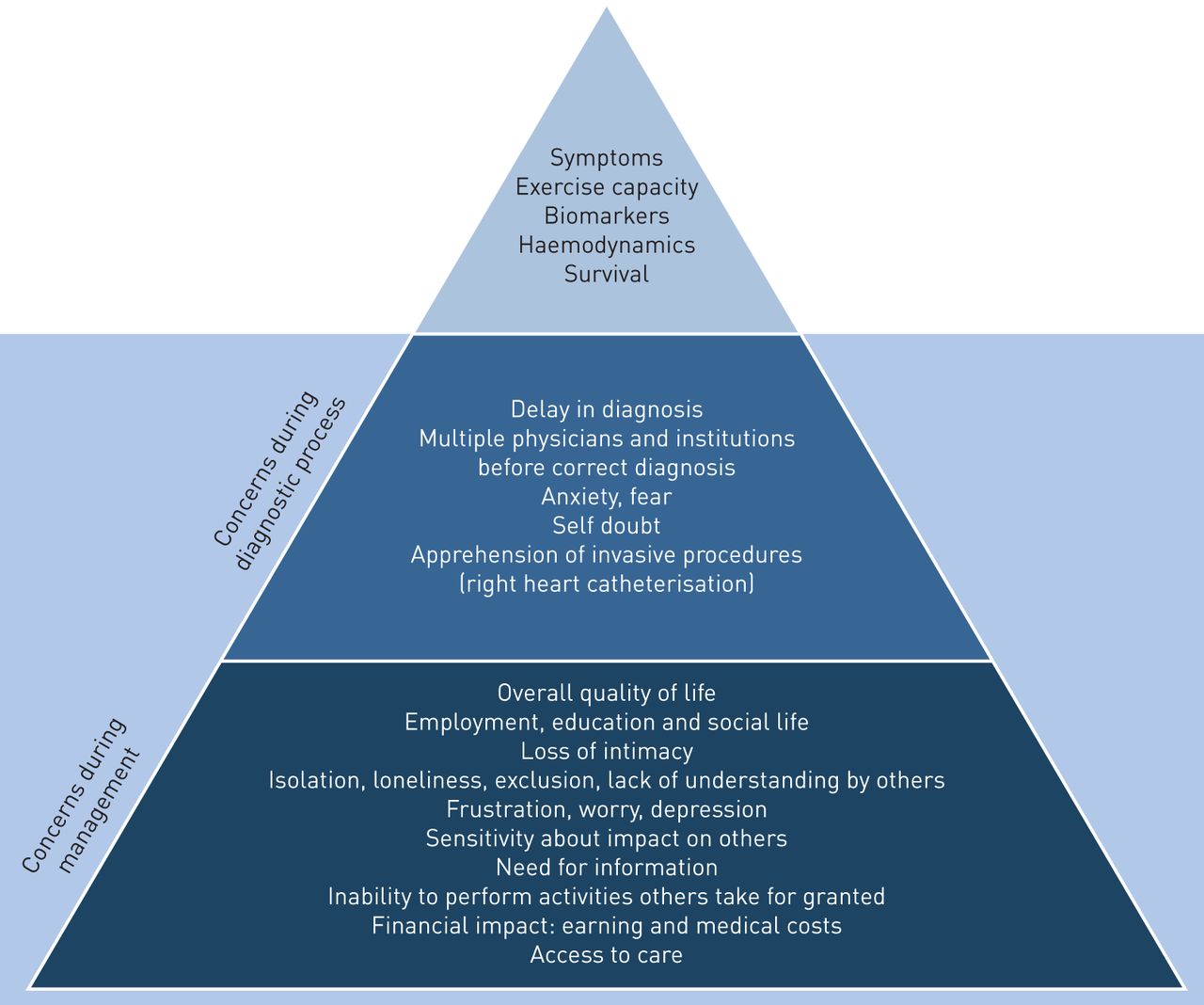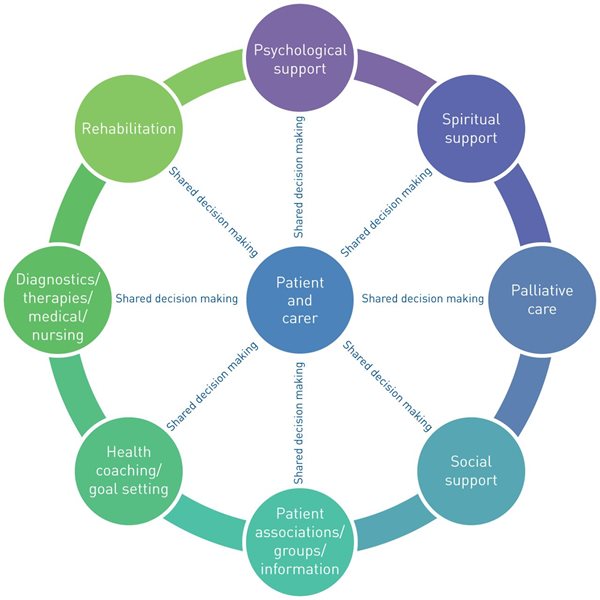This November we are celebrating how our connections to one another can lift us up during difficult times — such as living with PH during a pandemic! Pandemic or not, #LifeInPurple can be challenging. This blog post explores the patient perspective of a PH diagnosis, the significant influence it has on one’s life — beyond the physiological impact, and how to manage it all.
Read more about Sally here.
What is the “Patient Perspective”?
Studies and surveys show that the clinical diagnosis of the severity of pulmonary hypertension (PH) is only the “tip of the iceberg” (McGoon et al., 2019). The clinical side of things does not reflect the extensive range of emotional, physical, and psychosocial concerns that impact people. Under the surface are many other concerns, which we can see in the image below (Figure 1).
The “patient perspective” includes the impact PH has on patients, but also on family members, friends, and everyone who deeply loves and cares about people living with PH.

Figure 1. Survey results from patients, illustrating that traditional parameters of PH might only be the “tip of the iceberg” in this pyramid. Picture received from https://erj.ersjournals.com/content/53/1/1801919
The Whole Iceberg
To better manage all aspects of a PH diagnosis, it is recommended to not only discuss symptoms with your medical providers, but to also express your own unique experience of the disease, such as the emotional and social impacts, the limitations of daily/routine activities, and your opinions about treatment (McGoon et al., 2019).
In addition, one’s ability to handle stressful crises or situations is also important. It is called emotional resilience. Studies have found that people who can manage minor difficulties more easily are also able to deal with major stresses more quickly and more resiliently (Southwick, et al., 2005). Emotional resilience is a trait we can all develop. Eight significant components affect our ability to improve emotional resilience as you can see in Figure 2 below.

Figure 2. Eight different components for better care of PH patients. Picture received from https://erj.ersjournals.com/content/53/1/1801919
Specialists from each component should work together as an interprofessional team, sharing their decision making with people who live with PH (McGoon et al., 2019). All these components are explained in detail in an article that was contributed to by Dr. Sanjay Mehta, MDCM, FRCPC, PHA Canada Founding Board Member, Eternal PHriend, and Past-Chair, Director of the Southwest Ontario PH Clinic, London, ON. Click here to read it.
Read PH patient Jeannette MacKeen’s article about resilience.
How can we help each other and increase social awareness?
It is important to reach out to members of the PH community who are going through similar experiences. By sharing and suggesting solutions to common challenges, attending educational webinars (especially during this pandemic), as well as making collaborative efforts to raise awareness and advance care, we become more mentally strong. These solutions also allow us to better face the challenges in life (McGoon et al., 2019).
Reach Out
Many organizations such as PHA Canada understand the patient perspective, and have been created to help you and your family.
Support groups are an effective way to provide informal interactions by sharing empathetic experiences. There are many peer-led PH support groups in Canada, taking place in-person (pandemic permitting), by phone, and online.
Don’t hesitate to reach out to us at PHA Canada or to the greater PH Community: phacanada.ca/support.
It can be distressing when encountering others’ lack of knowledge and awareness of PH. To increase the accuracy of PH diagnosis and improve quality of life, we rely on everyone’s effort, including patients, caregivers, primary care physicians, and the general population to raise awareness (McGoon et al., 2019).
This year, it’s easier than ever for everyone to get involved in awareness-raising activities (big or small)! Make a donation, create a personal fundraising page, participate in the #LifeInPurple campaign on social media, buy a mask, or attend a virtual event here: https://phacanada.akaraisin.com/ui/phawarenessmonth.
References:
McGoon, M. D., Ferrari, P., Armstrong, I., Denis, M., Howard, L. S., Lowe, G., Mehta, S., Murakami, N., & Wong, B. A. (2019). The importance of patient perspectives in pulmonary hypertension. The European respiratory journal, 53(1), 1801919. https://doi.org/10.1183/13993003.01919-2018
Swetz, K. M., Shanafelt, T. D., Drozdowicz, L. B., Sloan, J. A., Novotny, P. J., Durst, L. A., ... & McGoon, M. D. (2012). Symptom burden, quality of life, and attitudes toward palliative care in patients with pulmonary arterial hypertension: results from a cross-sectional patient survey. The Journal of heart and lung transplantation, 31(10), 1102-1108.
Southwick, S. M., Vythilingam, M., & Charney, D. S. (2005). The Psychobiology of Depression and Resilience to Stress: Implications for Prevention and Treatment. Annual Review of Clinical Psychology, 1(1), 255-291. doi:10.1146/annurev.clinpsy.1.102803.143948